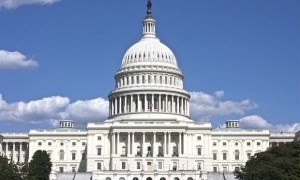 Earlier this week I testified at a hearing held by the Subcommittee on Higher Education and Workforce Training of the U.S. House of Representatives Committee on Education and the Workforce. The hearing, titled “Keeping College Within Reach: Enhancing Transparency for Students, Families, and Taxpayers,” examined what type of information about colleges is available to students interested in enrolling in postsecondary education, and what can be done to improve the quality of the information.
Earlier this week I testified at a hearing held by the Subcommittee on Higher Education and Workforce Training of the U.S. House of Representatives Committee on Education and the Workforce. The hearing, titled “Keeping College Within Reach: Enhancing Transparency for Students, Families, and Taxpayers,” examined what type of information about colleges is available to students interested in enrolling in postsecondary education, and what can be done to improve the quality of the information.
This is one of a series of hearings being held in both the House and the Senate in preparation for the reauthorization of the Higher Education Act of 1965 (HEA), the primary legislation that outlines the federal government’s role with respect to postsecondary education. The HEA was last reauthorized in 2008, and is due to be reauthorized again this year.
Even though the federal government has improved the amount of data about colleges and universities that it makes available to the public, in the words of the Committee, “. . .students still report confusion when researching their postsecondary options and trying to choose the institution that best meets their needs.” Thus, it held the hearing to examine what data are available and what can be done to improve what students know about attending college. The Lansing State Journal published a good article summarizing the hearing.
In my testimony, I emphasized that while there was much “data” available to prospective college students, especially from the federal government, there is much less good “information” that they can access. I discussed that many students, particularly those from first generation college-going families, and those in under-resourced high schools, have little or no access to high quality college counseling. This is in stark contrast to students from more well-off families, who attend schools with lower student-counselor ratios and where counselors are more geared toward helping students explore postsecondary options. Many of these wealthier families also use private college counselors to supplement what is available in the high schools, an option beyond the reach of poorer families.
I described for the members of the subcommittee the importance of students identifying which colleges would be the right fit for them. Understanding this requires more than just the raw data about colleges that the federal government publishes, and that many rankings and even guidebooks contain.
I was interested to hear that there was fairly broad bi-partisan support for improving the quality of information available to prospective students. Some of the representatives also questioned whether the existing data reporting requirements imposed by the federal government were too burdensome on colleges and universities.
It is too early to tell whether the House will include in its reauthorization legislation anything that would increase the amount of data institutions must report. But it was clear that the members of the subcommittee recognize that students and their families need better information, and on a more timely basis, to make informed decisions about college attendance.